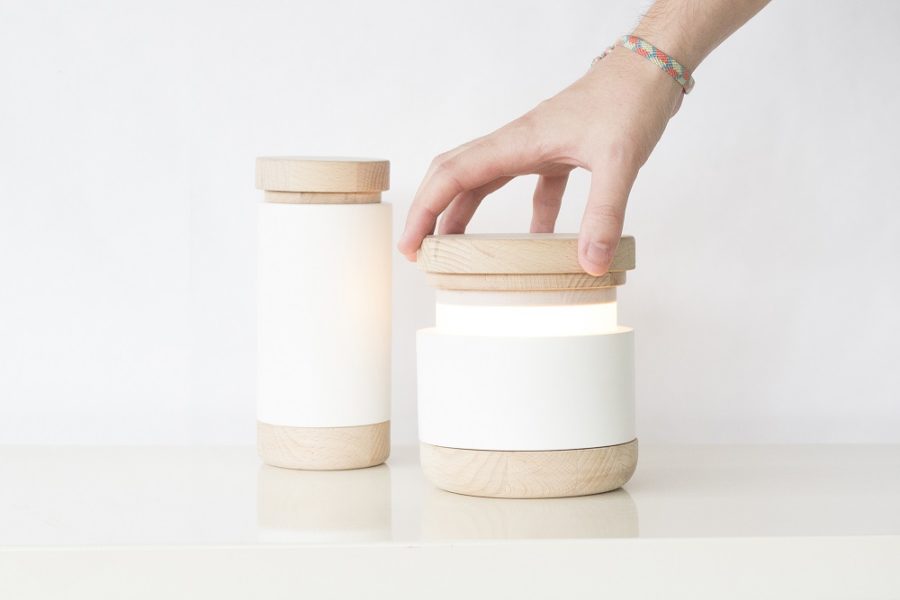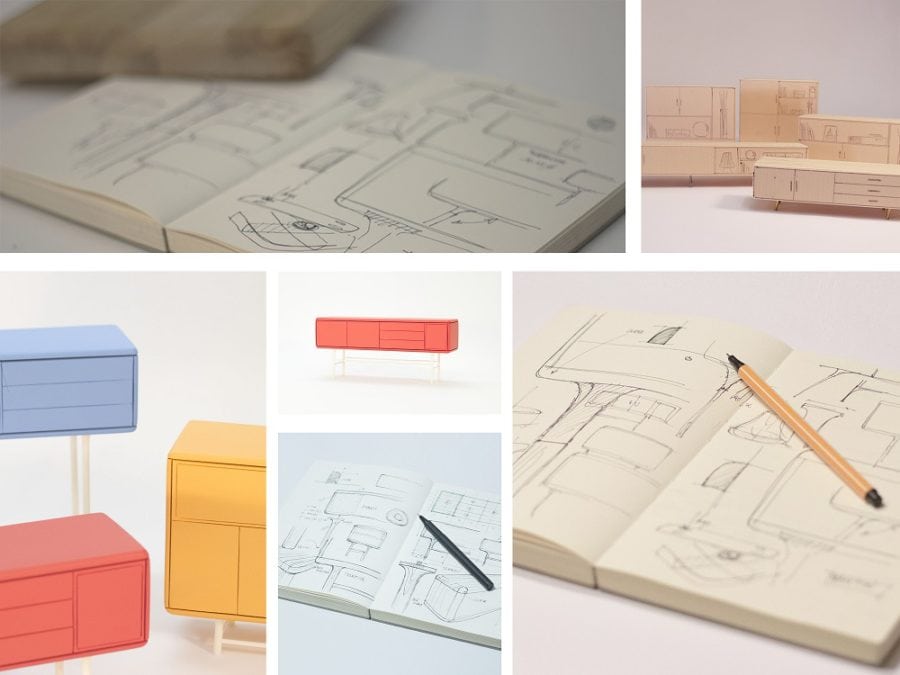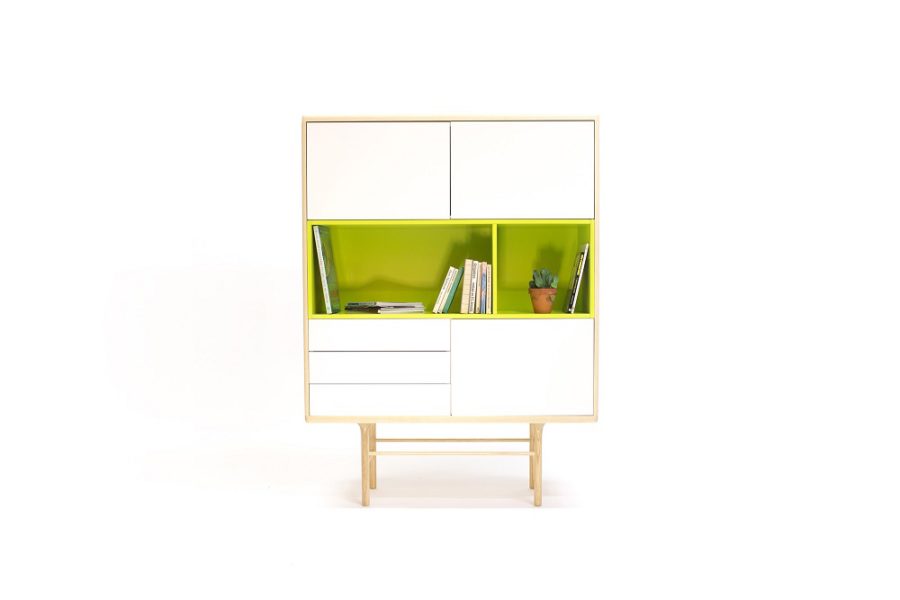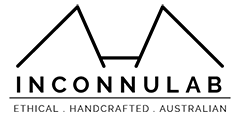When it comes to minimalist design, here at InconnuLab, we try to find the most exciting voices from all over the world. Spanish- born Carlos Jiménez marries in a unique way the Spanish spirit with Scandinavian essentialism, to design objects for the everyday life and he just happened to have a few minutes to speak to us about his aesthetic, the freelancing life and the challenges of working as a designer.
- You were born and raised in Spain but studied in Sweden, how do these different backgrounds inform your design aesthetic?
Yes, I was born in Almeria, south Spain. Then, in 2008 I began my studies in Industrial Design in Málaga, where I studied three years. Then, in 2011, thanks to the Erasmus program I was able to spend a year in Sweden.
In many universities in Spain, “Design” is still a degree that it is not so clear where to place it. When I was studying in Málaga this problem was even worse. In my case, we studied at the engineering school since it was an engineering degree. However, in Málaga, that was translated as a really technical degree with almost no courses about design. This fact can be frustrating for people who start these degrees with the idea of designing things.
This is the reason why I could say that moving to Sweden was probably a crucial point into my career. In Sweden I started working in different projects in the school, the courses were much more practical and suddenly I was finally feeling like someone designing things.
Then, after that year I was doing an internship in Vienna and then I went back to Sweden to study a master. I have been there the last two years.
Of course, after three years living in Sweden, the Scandinavian design has a big influence on the aesthetic of my designs. I love the simplicity and minimalistic style of the Scandinavian design. I also share with them the passion about natural materials, those materials that, as wine, get better quality with time. I also learnt that when designing in a minimalistic way, the details become the most important elements. However, sometimes I feel that this Scandinavian style is sometimes a bit boring. In these countries the main colours during almost the whole year, are grey scales, black and white. This is why I feel that I need to add some Mediterranean ingredients to this design receipt. Sometimes this ingredients are in the form of rounded and organic shapes that contrast with the straight minimalistic lines. Other times the ingredients are in form of bright colours that remind me the sunny days in south Spain or the turquoise blue of the sea. And, in many cases, I mix everything, colours and shapes from both influences.

- Are you freelancing at the moment or do you work for a company?
I started running my own studio in Spain a few months ago. So I could say that I was working as freelancer. However I just “clicked” the pause button on it and I started an internship period in a company.
- Can you tell us about the challenges of the freelancing life?
Well, I have been working as freelancer less than a year, so my experience is relatively short to talk about many aspects. However, I could talk about the challenges about starting as freelancer.
For many of us, it could just sound like “Great! You work from home in the projects you like” However it is not like that. When you work as freelancer you have to think you are your own boss. This means that you have to set the timetable, you are not going to be just designing, you will have to take care of many other tasks such as looking for projects, administrative work, social diffusion of your work, contacting people, travelling… And at the end, you realize that you just wanted to be working on design projects and that’s where you are spending less time.
Another challenge can be to separate your work from your live. Sometimes you will feel yourself working the whole day or thinking about work in every moment.
And finally, one of the most difficult challenges for me. The administrative work. Suddenly you are talking about taxes, invoices, customers, suppliers… You have to go to the tax office and there you feel like lost into a place that you don’t know… The administrative work is probably one of the most important things you have to do properly and for me it was (and it still is) one of the things that takes more time to do.

- Your designs marry the Scandinavian aesthetic with Mediterranean playfulness, can you tell us a bit more about your creative process? Where do you draw inspiration from?
As I previously mentioned. I think both styles are complementing each other quite well. The result is always a nice combination that sometimes goes a bit more to one side and sometimes to the other one. It is hard to say from where the inspiration is coming… It actually could come from many different and random places, situations, experiences… As Picasso said “if the muses come, they better find you working”. Many times, I have been thinking on something for many hours and then the only thing you need is to take a break and wait until the inspiration comes.
My creative process is normally starting with a research into existing products. In this research I don’t just look to similar products like the one I’m designing… I’m also looking for colours, materials, shapes… Then, for sure everything can be inspiring.
- You mostly design products for the everyday life, can you tell us what are the challenges of this?
Well, during my studies and the internship periods I have been designing many different things, bikes, scooters, camping tents, kitchenware, lamps, furniture… At the end what I always tried is to create objects that people would like to use and, at the same time, objects that people would like to look at. In the products for the everyday life, one of the main challenges could be the huge amount of existing products that are already on the market. Sometimes it is difficult to decide if designing something that will be just more beautiful than the existing things, or if the new product should add something else than aesthetic value.

- Your designs are minimal with splashes or bright colour, can you speak about the importance of colour in your designs?
For me colours are same important as functionality and shapes. However, it is true that in many cases, people first react to the colours, then to the shapes and finally they discover the details and the functions of the products. That is why colours are very important. Every colour has same importance for me and every colour has something to add to the design. When I talk about colours, I’m including not just the regular colours, I always try to look at wood, for example, as one more colour. So, at the end, all the colours have to create a balanced combination.
- What are you currently working on?
The last big project I have been working was the Kaaja Collection for the Swedish company By.Enströms. Then I was working on some other projects in lighting design and home accessories. However, as I already said, I paused this, while working as an intern for a company.
- What are your future plans?
Now I’m just trying to learn as more as possible and then we will see.
- Where can we find your products?
My webpage is www.carlosjimenezdesign.com, there you will find different projects I have been working on during the last years. Some of them are concepts, some of them prototypes and some of them are already in production.
The Kaaja Collection, that is the only product available for purchasing now, can be found at the company’s webpage www.byesntroms.com









